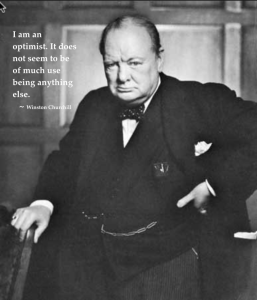
Charles Dickens’ famous opening sentence continues … “it was the age of wisdom, it was the age of foolishness, it was the epoch of belief, it was the epoch of incredulity.”
More than 150 years later, our business world is possessed of similar contradictions.
Sometimes the light you see at the end of the tunnel is sunshine; sometimes it’s another train coming.
In the distance – and in the dark – it’s very hard to discern the difference. Yet, missing that call has very fateful consequences.
[pullquote]”It was the best of times, it was the worst of times.” ~ Charles Dickens,”A Tale of Two Cities”[/pullquote]
In the dark tunnel of an economic downturn that may not have reached bottom, how do we differentiate between a bright idea and a lightning bolt?
Is this the time to take additional risks? Should we only survive – or try to thrive? Are some risks more palatable than others? How do we tell the difference? Let me suggest a few criteria that might help in assessing opportunities that may appear in this environment.
Bandwidth
If your business is out of control and you’re struggling to make payroll, you may not be able to gain sufficient mindshare to focus on a new opportunity.
Make sure you and your team can devote the time and energy to both properly evaluate such an opportunity and execute an implementation plan if you go forward.
Resources
Exciting opportunities are like beguiling temptresses, creating an irresistible force field that draws in the unwary.
I can’t recount all of the business owners I’ve known who have ventured into that treacherous territory, the urge to “make a deal” so commanding that the lack of vital resources was overlooked.
In addition to your personal mental energy, make sure you have sufficient financial and human firepower to be successful.
Value
Is this opportunity part of the business plan you established before a downturn?
If so, and it puts an important stake in the ground in a coveted territory or sews up a new product line, it’s worth considering.
If it’s what I call a “bluebird” – that deal that shows up on your window sill, unbidden and unexpected, like a chirping bird drawing you to the glass, be careful that you’re not diverted from your primary mission.
Make sure it provides value today. If not, make sure you have the resources to hold on until it does.
Motives
It always pays to understand the motives of the other party, but in today’s environment, it might bear deeper examination.
It would be natural to suspect that the other party’s business is struggling in this economy.
Notwithstanding what you see when you peel the onion, remember that the other party is probably struggling to make it work. Make sure you can succeed where they have not.
Timing
In this instance, I’m referring to more than the machinations of a sputtering economy.
Is this a unique opportunity that won’t come by again, a chance to buy a competitor that’s been at your neck for many years?
An elusive product line that you’ve been trying to capture for a decade?
If it’s something that can be deferred, make certain you can’t wait.
Due diligence
There is no substitute for solid due diligence.
I mentioned earlier the tempting sirens that beckon when opportunity knocks.
All the more reason to carefully assess the opportunity with facts, carefully measured.
Dig deep.
Go behind and beyond what you’re given to ask tough questions.
Don’t take no for an answer, and be especially wary of vague responses and missing information.
Planning
Finally, that elusive planning principle must be part of any growth strategy.
In this environment, it’s more important than ever to advocate a clear point of view that examines future scenarios, realistically appraising the struggling economy’s impact on the best laid plans.
Make a realistically achievable plan – and then reduce it by 20 percent – and then another 20 percent – and see if it works.
If not, make sure you have the resources to weather the storm.



